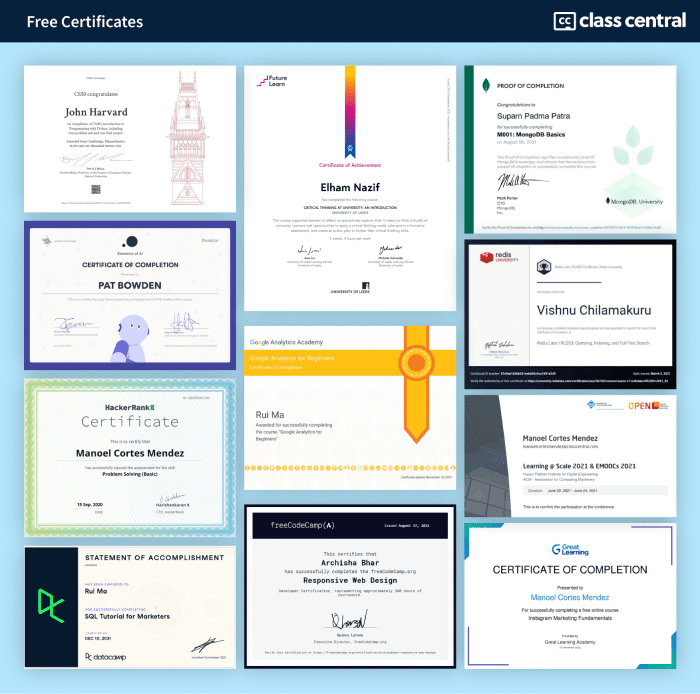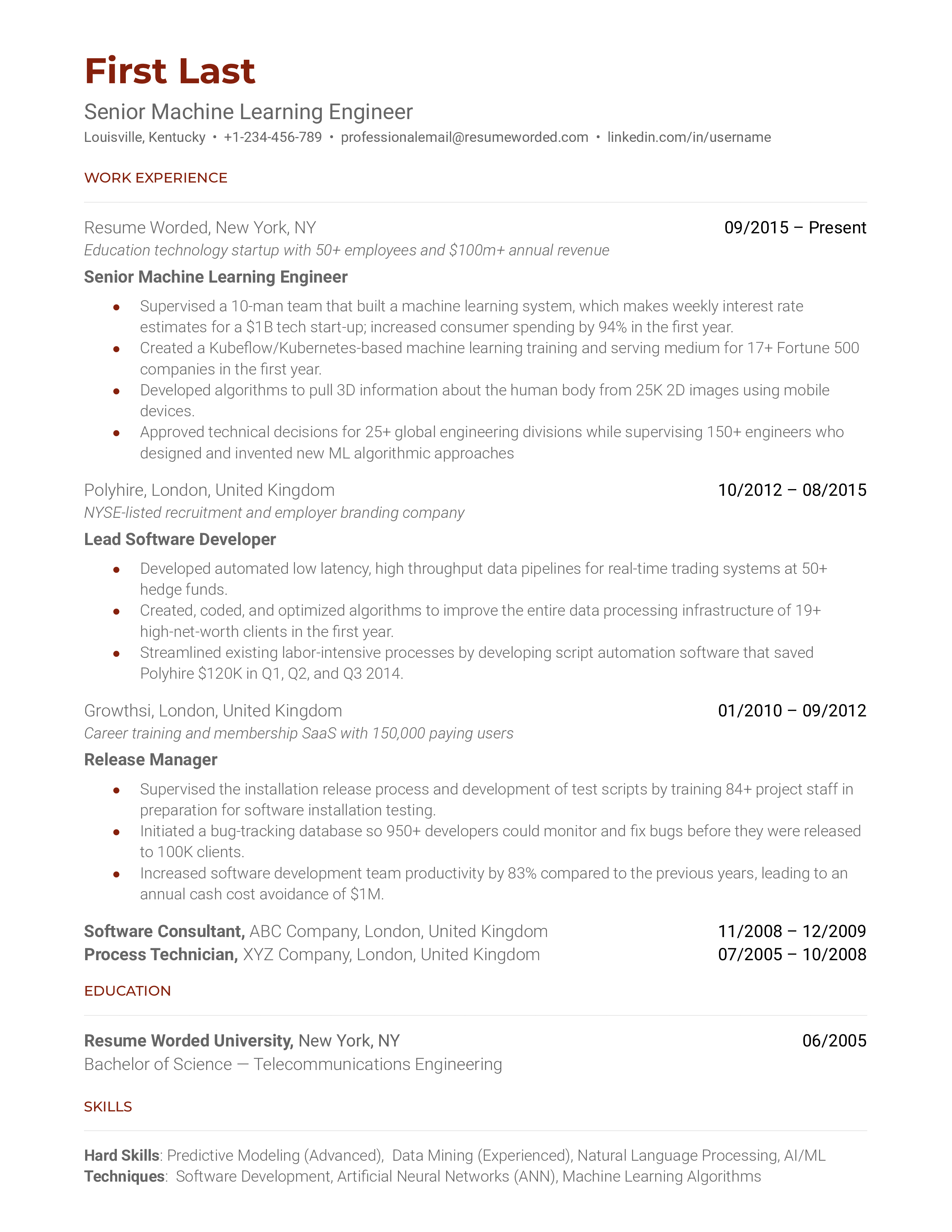All Categories
Featured
Table of Contents
- – Fascination About Software Engineer Wants To L...
- – The 8-Minute Rule for I Want To Become A Machi...
- – The Only Guide for Machine Learning For Devel...
- – 7 Simple Techniques For Machine Learning/ai E...
- – The Buzz on How To Become A Machine Learning...
- – The Facts About Software Engineering For Ai-...
- – All About What Is The Best Route Of Becoming...
Some people assume that that's cheating. If somebody else did it, I'm going to utilize what that person did. I'm forcing myself to assume with the possible services.
Dig a little deeper in the mathematics at the start, so I can build that structure. Santiago: Lastly, lesson number seven. This is a quote. It says "You need to comprehend every detail of a formula if you intend to utilize it." And after that I claim, "I assume this is bullshit suggestions." I do not believe that you need to comprehend the nuts and screws of every formula before you use it.
I've been using neural networks for the lengthiest time. I do have a sense of just how the slope descent works. I can not discuss it to you now. I would need to go and examine back to in fact obtain a better instinct. That doesn't indicate that I can not solve points using neural networks? (29:05) Santiago: Trying to force individuals to think "Well, you're not mosting likely to succeed unless you can describe each and every single information of exactly how this works." It returns to our sorting instance I think that's just bullshit recommendations.
As a designer, I have actually worked on numerous, lots of systems and I have actually utilized many, numerous things that I do not recognize the nuts and screws of exactly how it functions, despite the fact that I understand the influence that they have. That's the last lesson on that thread. Alexey: The funny thing is when I assume concerning all these collections like Scikit-Learn the algorithms they use inside to carry out, for example, logistic regression or something else, are not the exact same as the formulas we study in machine discovering classes.
Fascination About Software Engineer Wants To Learn Ml
So even if we attempted to find out to get all these basics of maker understanding, at the end, the algorithms that these collections make use of are various. ? (30:22) Santiago: Yeah, definitely. I assume we need a great deal more materialism in the industry. Make a great deal more of an impact. Or concentrating on delivering worth and a bit less of purism.

I typically talk to those that desire to work in the sector that desire to have their impact there. I do not dare to talk about that due to the fact that I do not understand.
But right there outside, in the sector, pragmatism goes a long way for certain. (32:13) Alexey: We had a comment that stated "Really feels even more like inspirational speech than discussing transitioning." Maybe we must change. (32:40) Santiago: There you go, yeah. (32:48) Alexey: It is an excellent motivational speech.
The 8-Minute Rule for I Want To Become A Machine Learning Engineer With 0 ...
One of the things I wanted to ask you. I am taking a note to chat about coming to be better at coding. However first, allow's cover a number of points. (32:50) Alexey: Let's start with core tools and structures that you need to discover to in fact change. Allow's state I am a software engineer.
I recognize Java. I know SQL. I understand just how to utilize Git. I recognize Celebration. Perhaps I understand Docker. All these things. And I read about machine knowing, it appears like an amazing point. So, what are the core tools and structures? Yes, I watched this video and I get convinced that I don't require to get deep into math.
Santiago: Yeah, absolutely. I assume, number one, you ought to begin learning a little bit of Python. Given that you currently understand Java, I do not think it's going to be a massive change for you.
Not since Python is the same as Java, however in a week, you're gon na get a whole lot of the differences there. Santiago: Then you obtain specific core tools that are going to be made use of throughout your whole job.
The Only Guide for Machine Learning For Developers
You get SciKit Learn for the collection of device knowing algorithms. Those are tools that you're going to have to be utilizing. I do not suggest just going and discovering concerning them out of the blue.
Take one of those programs that are going to begin presenting you to some troubles and to some core concepts of equipment knowing. I do not bear in mind the name, however if you go to Kaggle, they have tutorials there for totally free.
What's good concerning it is that the only demand for you is to know Python. They're mosting likely to present a problem and tell you just how to use choice trees to resolve that specific trouble. I think that process is incredibly powerful, because you go from no machine finding out background, to recognizing what the problem is and why you can not address it with what you understand now, which is straight software program engineering methods.
7 Simple Techniques For Machine Learning/ai Engineer
On the various other hand, ML designers concentrate on structure and releasing artificial intelligence versions. They concentrate on training designs with information to make forecasts or automate tasks. While there is overlap, AI designers take care of even more varied AI applications, while ML designers have a narrower concentrate on artificial intelligence formulas and their useful implementation.

Machine understanding engineers concentrate on creating and deploying machine knowing models into manufacturing systems. On the other hand, information scientists have a broader function that consists of information collection, cleaning, expedition, and structure models.
As organizations increasingly take on AI and device learning modern technologies, the demand for competent specialists expands. Machine learning engineers service sophisticated jobs, contribute to technology, and have competitive salaries. However, success in this area requires continual learning and staying up to date with advancing innovations and methods. Machine knowing duties are usually well-paid, with the capacity for high gaining capacity.
ML is basically different from typical software advancement as it concentrates on training computer systems to gain from data, as opposed to programming specific regulations that are performed systematically. Unpredictability of results: You are probably used to composing code with foreseeable results, whether your feature runs once or a thousand times. In ML, however, the end results are less particular.

Pre-training and fine-tuning: Exactly how these versions are educated on huge datasets and then fine-tuned for certain jobs. Applications of LLMs: Such as text generation, view analysis and information search and access.
The Buzz on How To Become A Machine Learning Engineer
The capability to handle codebases, combine changes, and solve conflicts is just as essential in ML growth as it is in typical software application projects. The abilities created in debugging and screening software application applications are highly transferable. While the context may change from debugging application logic to recognizing concerns in data processing or model training the underlying concepts of organized examination, hypothesis screening, and repetitive improvement coincide.
Device discovering, at its core, is greatly dependent on statistics and likelihood concept. These are vital for comprehending how algorithms learn from data, make predictions, and review their efficiency.
For those interested in LLMs, a comprehensive understanding of deep understanding designs is useful. This consists of not just the auto mechanics of neural networks but additionally the design of specific models for various usage situations, like CNNs (Convolutional Neural Networks) for picture handling and RNNs (Persistent Neural Networks) and transformers for sequential information and natural language processing.
You need to know these concerns and discover methods for identifying, alleviating, and interacting about predisposition in ML designs. This includes the prospective effect of automated decisions and the ethical implications. Many models, particularly LLMs, require significant computational resources that are typically provided by cloud systems like AWS, Google Cloud, and Azure.
Structure these skills will not just facilitate an effective transition right into ML yet likewise make sure that developers can add properly and responsibly to the advancement of this vibrant area. Concept is vital, but absolutely nothing beats hands-on experience. Start working with projects that allow you to apply what you have actually found out in a functional context.
Take part in competitors: Sign up with platforms like Kaggle to join NLP competitors. Build your tasks: Beginning with straightforward applications, such as a chatbot or a message summarization tool, and gradually increase intricacy. The field of ML and LLMs is rapidly developing, with brand-new innovations and innovations emerging frequently. Staying upgraded with the most recent research and patterns is crucial.
The Facts About Software Engineering For Ai-enabled Systems (Se4ai) Revealed
Join communities and discussion forums, such as Reddit's r/MachineLearning or neighborhood Slack channels, to go over ideas and get recommendations. Attend workshops, meetups, and conferences to get in touch with other experts in the area. Contribute to open-source tasks or write article regarding your learning trip and projects. As you obtain proficiency, start trying to find opportunities to include ML and LLMs into your work, or seek new functions concentrated on these innovations.

Potential usage situations in interactive software application, such as referral systems and automated decision-making. Comprehending unpredictability, standard statistical steps, and likelihood distributions. Vectors, matrices, and their duty in ML algorithms. Mistake minimization methods and slope descent described merely. Terms like version, dataset, functions, labels, training, inference, and validation. Information collection, preprocessing methods, model training, examination processes, and release factors to consider.
Decision Trees and Random Woodlands: User-friendly and interpretable designs. Support Vector Machines: Maximum margin classification. Matching problem kinds with ideal versions. Balancing efficiency and intricacy. Basic framework of semantic networks: nerve cells, layers, activation features. Layered computation and onward propagation. Feedforward Networks, Convolutional Neural Networks (CNNs), Recurring Neural Networks (RNNs). Photo acknowledgment, sequence prediction, and time-series analysis.
Continual Integration/Continuous Implementation (CI/CD) for ML workflows. Version tracking, versioning, and efficiency monitoring. Identifying and dealing with changes in version performance over time.
All About What Is The Best Route Of Becoming An Ai Engineer?

You'll be introduced to 3 of the most appropriate components of the AI/ML technique; overseen knowing, neural networks, and deep knowing. You'll grasp the distinctions between conventional shows and device understanding by hands-on development in supervised knowing prior to building out complex distributed applications with neural networks.
This training course works as an overview to equipment lear ... Program A lot more.
Table of Contents
- – Fascination About Software Engineer Wants To L...
- – The 8-Minute Rule for I Want To Become A Machi...
- – The Only Guide for Machine Learning For Devel...
- – 7 Simple Techniques For Machine Learning/ai E...
- – The Buzz on How To Become A Machine Learning...
- – The Facts About Software Engineering For Ai-...
- – All About What Is The Best Route Of Becoming...
Latest Posts
The Top 50+ Software Engineering Interview Questions And Answers
Anonymous Coding & Technical Interview Prep For Software Engineers
The 10 Types Of Technical Interviews For Software Engineers
More
Latest Posts
The Top 50+ Software Engineering Interview Questions And Answers
Anonymous Coding & Technical Interview Prep For Software Engineers
The 10 Types Of Technical Interviews For Software Engineers